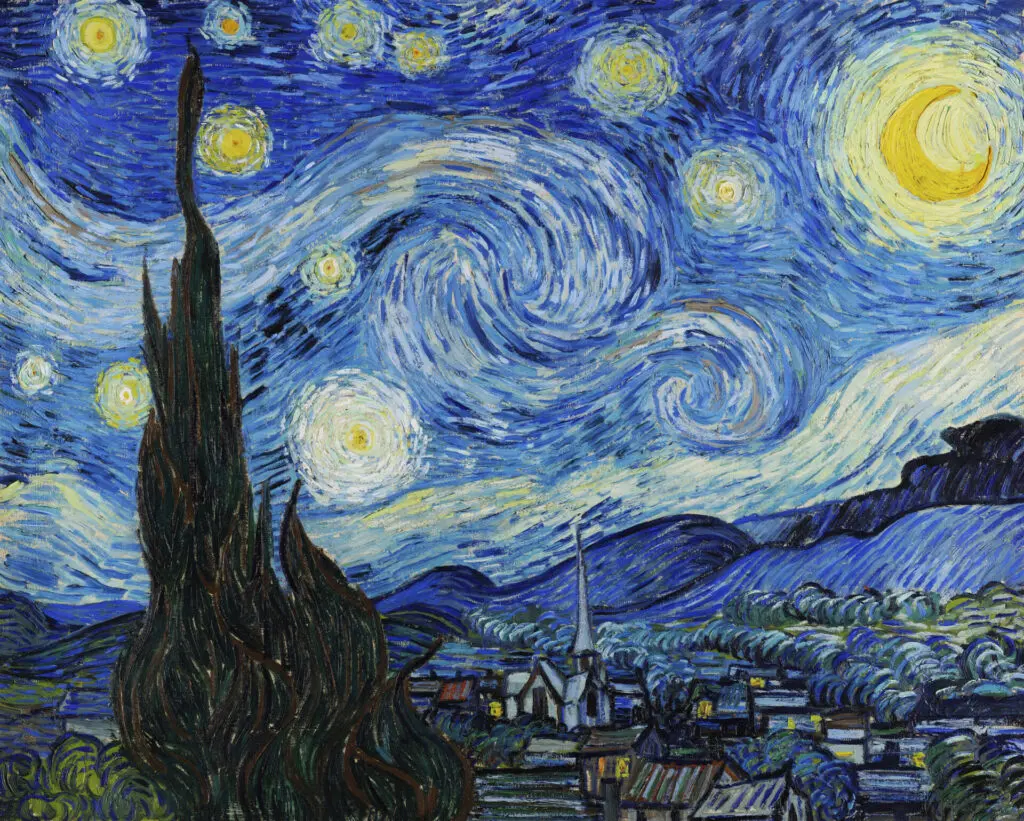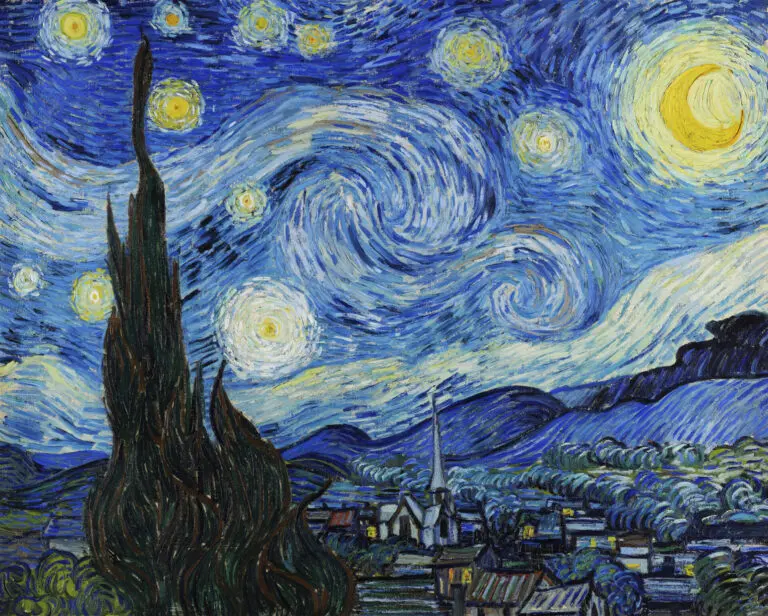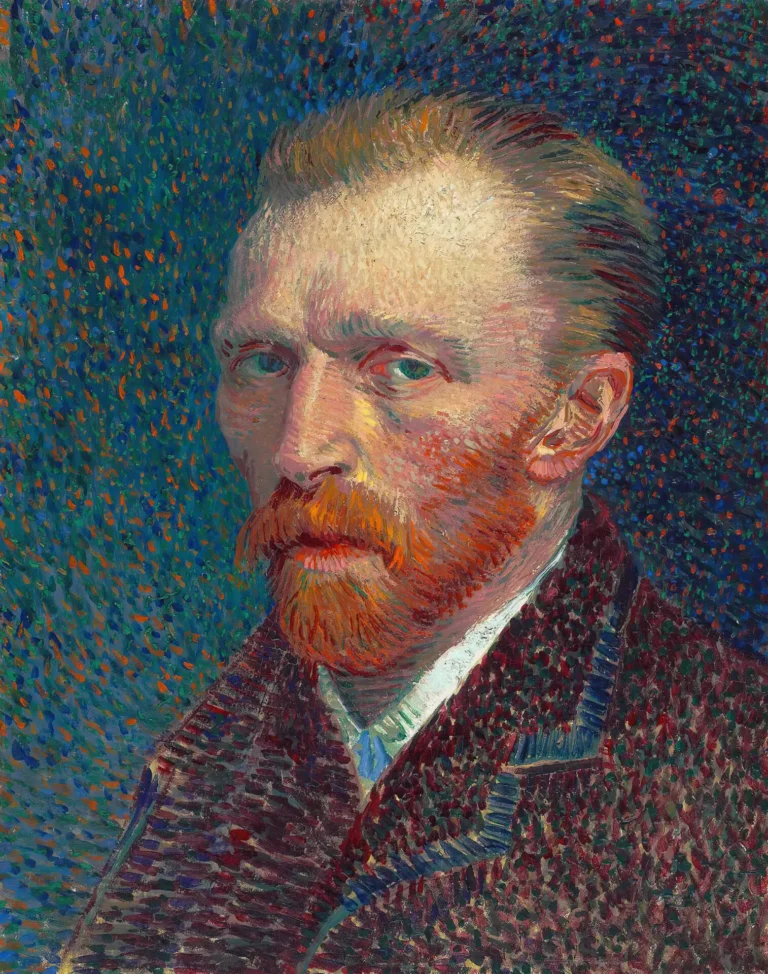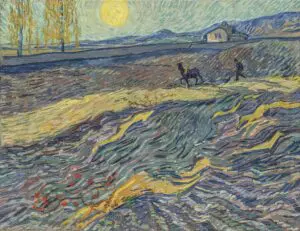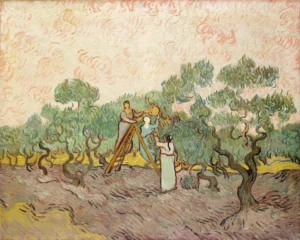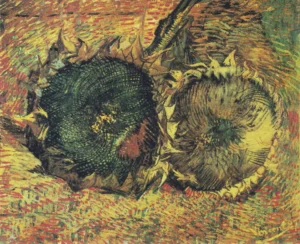The Starry Night
The Starry Night is a mesmerizing masterpiece of swirling colors, vibrant yellows, and deep blues, where the night sky appears alive with energy, motion, and wonder. Van Gogh’s unique vision of the cosmos is both enchanting and groundbreaking, capturing turbulence decades before science could define it. This intense yet dreamlike portrayal of the night sky makes The Starry Night one of the most captivating artworks in history.
1889
About the Artwork
The Starry Night is a renowned oil-on-canvas painting created by Dutch Post-Impressionist artist Vincent van Gogh in June 1889. It is widely celebrated as one of his most significant works and a masterpiece of Western art. The painting features a dramatic night sky filled with swirling blue hues, punctuated by a bright crescent moon and radiating stars. A small, imaginary village rests below the tumultuous sky, characterized by orderly lines of cottages and a prominent church steeple, which reflects van Gogh's Dutch heritage. The cypress trees in the foreground add a flame-like quality to the composition, connecting the earth to the heavens.
Did You Know
The Starry Night wasn’t Van Gogh’s favorite piece; he felt that it was a departure from realism and considered it experimental. Yet, today, it’s one of the most celebrated artworks globally.
The swirling patterns in the artwork are considered to closely resemble mathematical turbulence patterns in fluid dynamics. Scientists have studied the painting for its naturalistic depiction of turbulent flow, marveling at how Van Gogh intuitively captured this complex phenomenon decades before it was scientifically understood.
The painting includes an idealized view of a cypress tree, which Van Gogh associated with death and eternity, giving the artwork a deeper, almost spiritual dimension.




